#judith of bavaria
Explore tagged Tumblr posts
Text
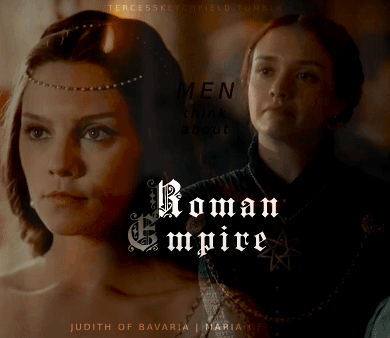
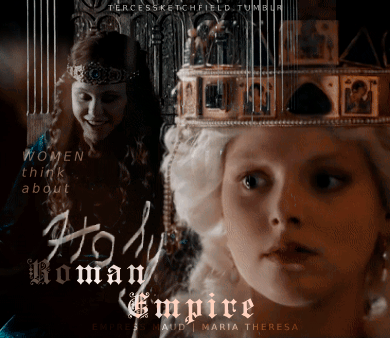
MEN THINK ABOUT ROMAN EMPIRE. WOMEN THINK ABOUT HOLY ROMAN EMPIRE
JUDITH OF BAVARIA (797-843) — Daughter of Count Welf I of Bavaria, Judith was a Carolingian Empress as the second wife of Louis I the Pious. Mother of Gisela and Charles the Bald, she foght for both her own influence at court and for the succession of her son over the claims of his elder half-brothers, the sons of Louis I from his first marriage. Charles became the Emperor in 875, after the death of Louis II, his nephew and a son of his half-brother Lothair / fancast: Annabel Scholey
MARIA OF AUSTRIA (1528-1603) — Daughter of Charles V, Holy Roman Emperor, and Isabella of Portugal. She served as Regent of Spain both jointly with her husband, Maximilian (before their accession to the imperial throne), and in person, for her father, and brother, Philip II. Her children include two Holy Roman Emperors, Rudolf II and Matthias, over whom she held great influence, and queens consorts of Spain, and France / fancast: Olivia Cooke
EMPRESS MAUD (1102-1167) — Daughter of Henry I of England and Matilda of Scotland. Her first marriage to the Holy Roman Emperor, Henry V, gave her the title under which she came down into history, and was a source of great pride to Maud. Rightful heiress of Henry I, she confronted her cousin, King Stephen, in the civil war, known as the Anarchy, fighting ferociously for her rights. She failed in this for herself but won for her son Henry, who became king and established the Plantagenet dynasty in England / cast: Alison Pill in The Pillars of the Earth (2010)
MARIA THERESA (1717-1780) — She succeded her father Charles VI as the ruler of Habsburg monarchy in 1740, and devoutedly defended it against its enemies in the War of Austrian Succession and the Seven Year's War. Wife of the Holy Roman Emperor, Francis I, she was a forceful personality and a competent ruler herself, reigning first in her own right, and later, jointly with her son Empreror Joseph II. Her children include two Holy Romam Emperors (Joseph II and Leopold II), queens consorts of Naples ans Sicily, and France / cast: Marie-Luise Stockinger in Maria Theresia (2017)
#historyedit#judith of bavaria#maria of austria#empress maud#empress matilda#maria theresa#maria theresia#perioddramaedit#history#women in history#perioddramasource#onlyperioddramas#tusereliza#userbennet#usermina#weloveperioddrama#cortegiania#perioddramagif#gifshistorical#my edit#*i have literally zero idea what is this lmao* but i really like it idk
142 notes
·
View notes
Text

The Carolingians: Pepin the Brief (715-768) and Bertrade of Laon (720-783), Charlemagne (742-814) and Hildegarde of Vintzgau (758-783), Louis I the Pieux (778-840) and Ermengarde of Hesbaye.
#carolingians#carolingian dynasty#pepin the short#bertrada of laon#hildegarde#charlemagne#judith of bavaria#louis the pious#carolingiens#royaume de france#roi des francs#vive le roi#empereur#re d'italia#kingdom of italy#engraving#full length portrait#engravings#regno d'italia
7 notes
·
View notes
Text
The dynasty of the Karlingians and the Normans('Vikings' version)
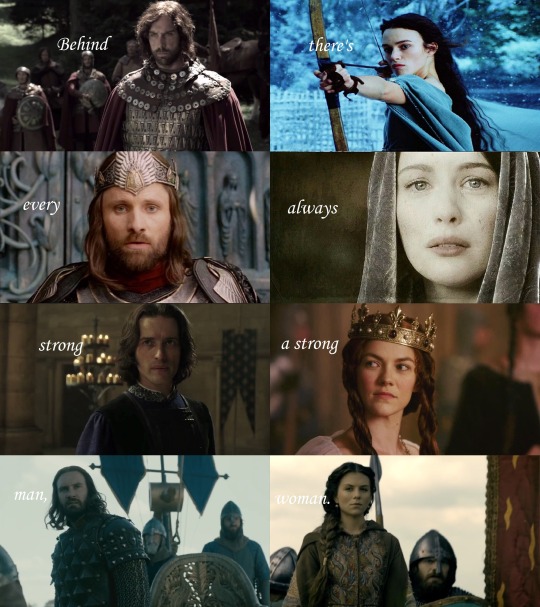
My ideal cast for an hypothetical series about the Franks and the Normans (yep, i'm obsessed with this idea xD!):
Alexander Wüst as Emperor Charlemagne
Keira Knightley as Empress Hildegard, Charlemagne's wife
Viggo Mortensen as Emperor Louis I the Pious
Liv Tyler as Empress Judith, Louis the Pious' wife
Ed Stoppard as Emperor Charles II the Bald
Olivia Ross as Empress Frederuna, Charles the Bald's wife (yes, i know it should be Ermentrude of Orléans, but by the messy Vikings' timeline it is so).
and the irreplaceable
Clive Standen as Rollo, I Duke of Normandy
Morgane Polawski as princess Gisla, Rollo's wife.
#vikings#vikings the franks#the karlingians#the normans#Charlemagne#Hildegarde#Louis the Pious#judith of bavaria#vikings charles#Frederuna#vikings rollo#vikings gisla#charlemagnexhildegarde#louisxjudith#charlesxfrederuna#rolloxgisla#a strong man and a strong woman#a powerful lineage#wouldn't it be a masterpiece#the franks and the normans deserve their series
4 notes
·
View notes
Text


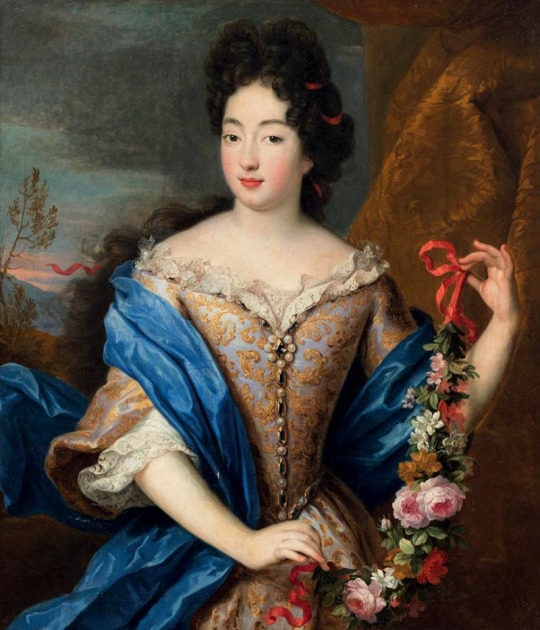
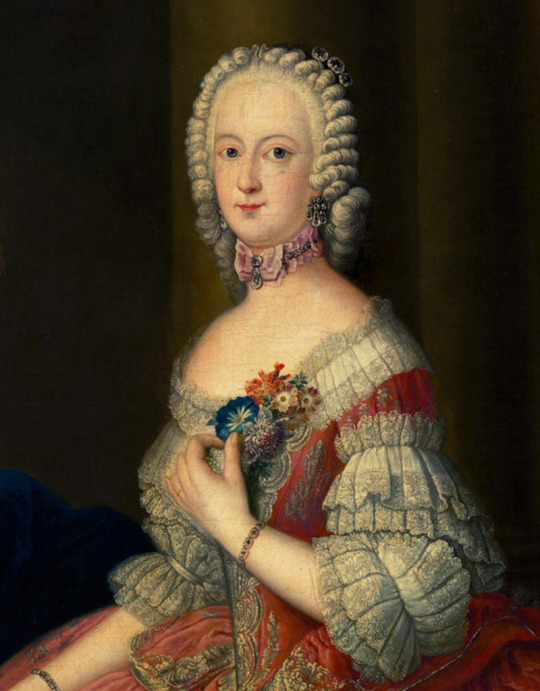

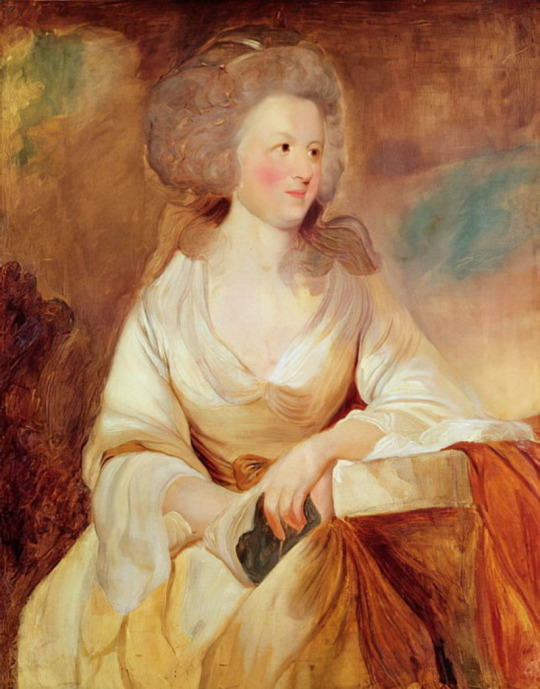

Royal Birthdays for today, March 13th:
Judith of Habsburg, Queen of Bohemia, 1271
Louis I, Duke of Orléans, 1372
Anne of Bavaria, Princess Palatine, 1648
Philippine Charlotte of Prussia, Duchess of Brunswick-Wolfenbüttel, 1716
Joseph II, Holy Roman Emperor, 1741
Louise Marie Adélaïde de Bourbon-Penthièvre, Duchess of Orléans, 1753
George Mikhailovich, Prince of Prussia, 1981
#louis i#anne of bavaria#joseph ii#Louise Marie Adélaïde de Bourbon-Penthièvre#George Mikhailovich#Philippine Charlotte of Prussia#Judith of Habsburg#long live the queue#royal birthdays
13 notes
·
View notes
Text



tomyris kills cyrus, judith kills holofernes, jael kills sisera
miniatures from a speculum humanae salvationis manuscript, bavaria (?), c. 1466-68
source: Munich, BSB, Clm 18377, fol. 65v-66v
#15th century#speculum humanae salvationis#judith#holofernes#tomyris#cyrus#jael#sisera#illuminated manuscript#medieval art
183 notes
·
View notes
Text

Ruth and Harry Posmantier, Holocaust survivors, at their wedding on December 22, 1945 in Landsberg, Baveria, Germany.
Harry Posmantier (born Henoch) was born in Bedzin, Poland on December 24, 1921 to Chaim David and Gitl Posmantier. Chaim was a butcher in the town, and he died in the concentration camp Klettendorf (in Germany) in 1944 at the age of 51. His mother, who had been a housewife, was gassed at Auschwitz in 1943 at the age of 46. Harry's brothers, Isaak and Schlomo, were both sent to concentration camps from '42-'45 and '43-'45 respectively. They both survived. Harry lived in Bedzin from his birth in 1931 until October 1940. During the war, he was sent to twelve labor and concentration camps (from October 27, 1940 until April 30, 1945). On April 30th, Harry was liberated by the US 3rd Army and a Jewish tank seargant from Brooklyn. He was liberated from Staltach, Bavaria at the age of 24. After liberation, Harry lived at the Landsberg D.P. camp in Bavaria. He lived there from May 1945 - March 1948. On December 22, 1945, Harry married Ruth Judith Katz. They married in Landsberg, and in 1948 the couple departed from Marseille, France on the Mala ship to emigrate to Israel illegally. They later immigrated to the United States.
These are my own grandparents. We called them Pookie and Bobo, growing up. While I don't remember "Uncle Itchy", as Harry's brother Yitzchak was nicknamed by my mother, Schlomo was Uncle Sam in my life; we also lived near Ruth's brother Eli Katz, and his wife and daughter.
#jumblr#am yisrael chai#facebook reminded me it's the anniversary of Pookie's death#so i'm showing her and Bobo to all of you#gnu#as it were
84 notes
·
View notes
Text
Wives and Daughters of Holy Roman Emperors: Age at First Marriage
I have only included women whose birth dates and dates of marriage are known within at least 1-2 years, therefore, this is not a comprehensive list.
This list does not include women who died before their husbands were crowned Emperor. It spans between the beginning of the reign of Otto I (962 CE) and the end of the reign of Francis II (1806 CE).
The average age at first marriage among these women was 17. The sample size was 91 women. The youngest bride, Bianca Maria Sforza, was just 2 years old when she wed her first husband, who was himself 9. The oldest bride, Constance of Sicily, was 32 years old.
Adelaide of Italy, wife of Otto I, HRE: age 15 when she married Lothair II, King of Italy, in 947 CE
Liutgarde of Saxony, daughter of Otto I, HRE: age 15 when she married Conrad the Red, Duke of Lorraine, in 947 CE
Theophanu, wife of Otto II, HRE: age 17 when she married Otto in 972 CE
Cunigunde of Luxembourg, wife of Henry II, HRE: age 24 when she married Henry in 999 CE
Gisela of Swabia, wife of Conrad II, HRE: age 12 when she married Brun I of Brunswick in 1002 CE
Agnes of Poitou, wife of Henry III, HRE: age 18 when she married Henry in 1043 CE
Matilda of Germany, daughter of Henry III, HRE: age 11 when she married Rudolf of Rheinfelden in 1059 CE
Judith of Swabia, daughter of Henry III, HRE: age 9 when she married Solomon, King of Hungary in 1063 CE
Bertha of Savoy, wife of Henry IV, HRE: age 15 when she married Henry in 1066 CE
Agnes of Waiblingen, daughter of Henry IV, HRE: age 14 when she married Frederick I, Duke of Swabia in 1086 CE
Empress Matilda, wife of Henry V, HRE: age 12 when she married Henry in 1114 CE
Beatrice I, Countess of Burgundy, wife of Frederick I, HRE: age 13 when she married Frederick in 1156 CE
Beatrice, daughter of Frederick I, HRE: age 10 when she married Guillaume II, Count of Chalon in 1173 CE
Constance, Queen of Sicily, wife of Henry IV, HRE: age 32 when she married Henry IV in 1186 CE
Beatrice of Swabia, first wife of Otto IV, HRE: age 14 when she married Otto in 1212 CE
Maria of Brabant, second wife of Otto IV, HRE: age 24 when she married Otto in 1214 CE
Constance of Aragon, first wife of Frederick II, HRE: age 19 when she married Emeric of Hungary in 1198 CE
Isabella II of Jerusalem, second wife of Frederick II, HRE: age 13 when she married Frederick in 1225 CE
Isabella of England, third wife of Frederick II, HRE: age 21 when she married Frederick in 1235 CE
Margaret of Sicily, daughter of Frederick II, HRE: age 14 when she married Albert II, Margrave of Meissen in 1255 CE
Anna of Hohenstaufen, daughter of Frederick II, HRE: age 14 when she married John III Doukas Vatatzes in 1244 CE
Marie of Luxembourg, daughter of Henry VII, HRE: age 18 when she married Charles IV of France in 1322 CE
Beatrice of Luxembourg, daughter of Henry VII, HRE: age 13 when she married Charles I of Hungary in 1318 CE
Margaret II, Countess of Hainaut, wife of Louis IV, HRE: age 13 when she married Louis in 1324 CE
Matilda of Bavaria, daughter of Louis IV, HRE: age 10 when she married Frederick II, Margrave of Meissen in 1323 CE
Beatrice of Bavaria, daughter of Louis IV, HRE: age 12 when she married Eric XII of Sweden in 1356 CE
Anna von Schweidnitz, wife of Charles IV, HRE: age 14 when she married Charles in 1353 CE
Elizabeth of Pomerania, wife of Charles IV, HRE: age 16 when she married Charles in 1378 CE
Margaret of Bohemia, daughter of Charles IV, HRE: age 7 when she married Louis I of Hungary in 1342 CE
Catherine of Bohemia, daughter of Charles IV, HRE: age 14 when she married Rudolf IV, Duke of Austria in 1356 CE
Elisabeth of Bohemia, daughter of Charles IV, HRE: age 8 when she married Albert III, Duke of Austria in 1366 CE
Anne of Bohemia, daughter of Charles IV, HRE: age 16 when she married Richard II of England in 1382 CE
Margaret of Bohemia, daughter of Charles IV, HRE: age 8 when she married John III, Burgrave of Nuremburg in 1381 CE
Barbara of Cilli, wife of Sigismund, HRE: age 13 when she married Sigismund in 1405 CE
Elizabeth of Luxembourg, daughter of Sigismund, HRE: age 13 when she married Albert II of Germany in 1422 CE
Eleanor of Portugal, wife of Frederick III, HRE: age 18 when she married Frederick in 1452 CE
Kunigunde of Austria, daughter of Frederick III, HRE: age 22 when she married Albert IV, Duke of Bavaria in 1487 CE
Bianca Maria Sforza, wife of Maximilian I, HRE: age 2 when she married Philibert I, Duke of Savoy in 1474 CE
Margaret of Austria, daughter of Maximilian I, HRE: age 17 when she married John, Prince of Asturias in 1497 CE
Barbara von Rattal, daughter of Maximilian I, HRE: age 15 when she married Siegmund von Dietrichstein in 1515 CE
Dorothea of Austria, daughter of Maximilian I, HRE: age 22 when she married Johan I of East Frisia in 1538 CE
Isabella of Portugal, wife of Charles V, HRE: age 23 when she married Charles in 1526 CE
Maria of Austria, daughter of Charles V, HRE: age 20 when she married Maximilian II, HRE in 1548 CE
Joanna of Austria, daughter of Charles V, HRE: age 17 when she married John Manuel, Prince of Portugal in 1552 CE
Margaret of Parma, daughter of Charles V, HRE: age 14 when she married Alessandro de’ Medici, Duke of Florence, in 1536 CE
Elizabeth of Austria, daughter of Ferdinand I, HRE: age 16 when she married Sigismund II Augustus of Poland in 1543 CE
Anna of Austria, daughter of Ferdinand I, HRE: age 17 when she married Albert V, Duke of Bavaria in 1546 CE
Maria of Austria, daughter of Ferdinand I, HRE: age 15 when she married William of Julich-Cleves-Berg in 1546 CE
Catherine of Austria, daughter of Ferdinand I, HRE: age 16 when she married Francesco III Gonzaga in 1559 CE
Eleanor of Austria, daughter of Ferdinand I, HRE: age 27 when she married William I, Duke of Mantua in 1561 CE
Barbara of Austria, daughter of Ferdinand I, HRE: age 26 when she married Alfonso II d’Este in 1565 CE
Joanna of Austria, daughter of Ferdinand I, HRE: age 18 when she married Francesco I de’ Medici in 1565 CE
Anna of Austria, daughter of Maximilian II, HRE: age 21 when she married Philip II of Spain in 1570 CE
Elisabeth of Austria, daughter of Maximilian II, HRE: age 16 when she married Charles IX of France in 1570 CE
Anna of Tyrol, wife of Matthias, HRE: age 26 when she married Matthias in 1611 CE
Eleonora Gonzaga the Elder, wife of Ferdinand II, HRE: age 24 when she married Ferdinand in 1622 CE
Maria Anna of Austria, daughter of Ferdinand II, HRE: age 25 when she married Maximilian I, Elector of Bavaria in 1635 CE
Cecilia Renata of Austria, daughter of Ferdinand II, HRE: age 26 when she married Władysław IV of Poland in 1637 CE
Maria Anna of Spain, wife of Ferdinand III, HRE: age 25 when she married Ferdinand in 1631 CE
Maria Leopoldine of Austria, wife of Ferdinand III, HRE: age 16 when she married Ferdinand in 1648 CE
Eleonora Gonzaga the Younger, wife of Ferdinand III, HRE: age 21 when she married Ferdinand in 1651 CE
Mariana of Austria, daughter of Ferdinand III, HRE: age 15 when she married Philip IV of Spain in 1649 CE
Eleonore of Austria, daughter of Ferdinand III, HRE: age 17 when she married Michael I of Poland in 1670 CE
Maria Anna Josepha of Austria, daughter of Ferdinand III, HRE: age 24 when she married Johann Wilhelm II, Elector Palatine in 1678 CE
Margaret Theresa of Spain, wife of Leopold I, HRE: age 15 when she married Leopold in 1666 CE
Claudia Felicitas of Spain, wife of Leopold I, HRE: age 20 when she married Leopold in 1673 CE
Eleonore Magdalene of Neuberg, wife of Leopold I, HRE: age 21 when she married Leopold in 1676 CE
Maria Antonia of Austria, daughter of Leopold I, HRE: age 16 when she married Maximilian II Emanuel, Elector of Bavaria in 1685 CE
Maria Anna of Austria, daughter of Leopold I, HRE: age 25 when she married John V of Portugal in 1708 CE
Wilhelmine Amalie of Brunswick, wife of Joseph I, HRE: age 26 when she married Joseph in 1699 CE
Maria Josepha of Austria, daughter of Joseph I, HRE: age 20 when she married Augustus III of Poland in 1719 CE
Maria Amalia of Austria, daughter of Joseph I, HRE: age 21 when she married Charles VII, HRE in 1722 CE
Elisabeth Christine of Brunswick, wife of Charles VI, HRE: age 17 when she married Charles in 1708 CE
Maria Theresa of Austria, daughter of Charles VI, HRE: age 19 when she married Francis I, HRE in 1736 CE
Maria Anna of Austria, daughter of Charles VI, HRE: age 26 when she married Charles Alexander of Lorraine in 1744 CE
Maria Antonia of Bavaria, daughter of Charles VII, HRE: age 23 when she married Frederick Christian, Elector of Saxony in 1747 CE
Maria Anna Josepha of Bavaria, daughter of Charles VII, HRE: age 20 when she married Louis George of Baden-Baden in 1755 CE
Maria Josepha of Bavaria, daughter of Charles VII, HRE: age 26 when she married Joseph II, HRE in 1765 CE
Maria Christina, daughter of Francis I, HRE: age 24 when she married Albert Casimir, Duke of Teschen in 1766 CE
Maria Amalia, daughter of Francis I, HRE: age 23 when she married Ferdinand I, Duke of Parma in 1769 CE
Maria Carolina, daughter of Francis I, HRE: age 16 when she married Ferdinand IV & III of Sicily in 1768 CE
Maria Antonia, daughter of Francis I, HRE: age 14 when she married Louis XVI of France in 1770 CE
Maria Josepha of Bavaria, wife of Joseph II, HRE: age 26 when she married Joseph in 1765 CE
Maria Luisa of Spain, wife of Leopold II, HRE: age 19 when she married Leopold in 1764 CE
Maria Theresa of Austria, daughter of Leopold II, HRE: age 20 when she married Anthony of Saxony in 1787 CE
Maria Clementina of Austria, daughter of Leopold II, HRE: age 20 when she married Francis I of Sicily in 1797 CE
Maria Theresa of Naples, wife of Francis II, HRE: age 18 when she married Francis in 1790 CE
Marie Louise, daughter of Francis II, HRE: age 19 when she married Napoleon I of France in 1810 CE
Maria Leopoldina, daughter of Francis II, HRE: age 20 when she married Pedro I of Brazil and IV of Portugal in 1817 CE
Clementina, daughter of Francis II, HRE: age 18 when she married Leopold of Salerno in 1816 CE Marie Caroline, daughter of Francis II, HRE: age 18 when she married Frederick Augustus of Saxony in 1819 CE
34 notes
·
View notes
Text
Two killed in knife attack in German park
Two people were killed and several others injured on Wednesday in a knife attack in a park in southern Germany.
Police arrested a male suspect after the incident in Aschaffenburg, located in the southeastern state of Bavaria, and local authorities confirmed there was no longer a threat to public safety.
According to the Main-Echo newspaper, the attacker was allegedly stalking a group of kindergarteners. The carers were walking with five young children in Schöntal Park. The assailant attacked the children. A two-year-old boy died and one of the nannies was injured and taken to hospital.
The attacker reportedly stabbed a two-year-old girl from Syria three times in the neck area with a kitchen knife. A 72-year-old man was also attacked and suffered multiple wounds to the chest, according to Bavarian Health Minister Judith Gerlach.
It is not yet clear whether the offence was terrorist-motivated. A police spokesman said and asked to refrain from speculation:
“The investigation into motives is ongoing.”
The suspect has been arrested. The second person initially arrested has been ruled out as a suspect. The police wrote on X:
“This is a witness. He is currently being questioned.”
The alleged assailant from Aschaffenburg has drawn attention for violent offences three times in the past. Each time he was placed in psychiatric institutions but then released again, Bavarian Interior Minister Joachim Herrmann (CSU) said.
Chancellor Olaf Scholz expressed condolences to the victims and their families and said it was an incredible “act of terror.”
Read more HERE

#world news#news#world politics#europe#european news#european union#eu politics#eu news#germany#germany news#germany politics#german news#german politics#aschaffenburg#knife attack
1 note
·
View note
Text
Charles the Bald: The Rise, Reign, and Legacy of a Carolingian Monarch
Early Life: Born into a Fragmented Empire Charles the Bald was born into a world of great political complexity and dynastic ambition. He was the youngest son of Louis the Pious, the second Carolingian emperor, and his second wife, Judith of Bavaria. Louis the Pious was the son of the great Charlemagne, under whose reign the Carolingian Empire reached its zenith. However, by the time Charles was…
0 notes
Text
What's up with that? Ecclesia and Synagoga

Close up of Ecclesia and Synagoga flanking the Fürstenportal or Princely Portal of Bamberg Cathedral, July 2022
My first trip to Germany, my first encounter with Ecclesia and Synagoga. I had never seen these statues before and once I learned their names it was clear which one was which. But why are these female figures personifying the Church and the Jewish Synagogue on a Church? That led me to this post.
Ecclesia and Synagoga, the ones that survive today anyway, are most often represented by young and attractive females. Ecclesia, the Church, stands strong and confident wearing a crown and carries a chalice and staff with a cross. Synagoga is blindfolded and/or looking down and carrying a broken spear and torah scrolls.
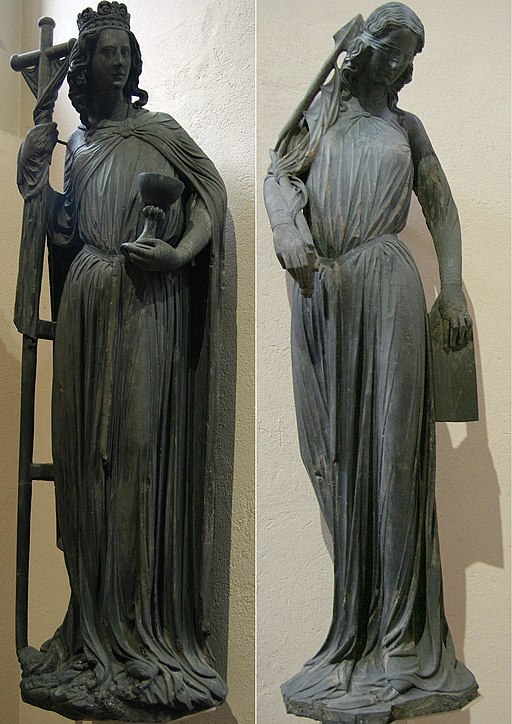
The original Ecclesia and Synagoga from the portal of Strasbourg Cathedral now in Musée de l'Œuvre Notre-Dame
My Ecclesia at Bamberg did not have the telltale signs of the staff with a cross or the chalice. But even with that, not knowing this symbolism, I wouldn't have put together the opposing woman as the Synagogue. It seemed to me to just depict someone blind to the faith of Christianity, not everything must be about Jews..right?
According to her book on the subject The Jew, the Cathedral and the Medieval City: Synagoga and Ecclesia in the Thirteenth Century, Nina Rowe explains that Ecclesia and Synagoga are generally found on the cathedrals of larger cities in northern Europe that had significant Jewish communities, especially in Germany(!) It was meant to remind Jews of their place (as if they needed the reminder) in a Christian dominated society. She notes most portal figures are from the 13th century.
So when did the Ecclesia and Synagoga depictions start?
Wikipedia says around 830, in a Crucifixion from the Drogo Sacramentary. Pic is in the public domain.
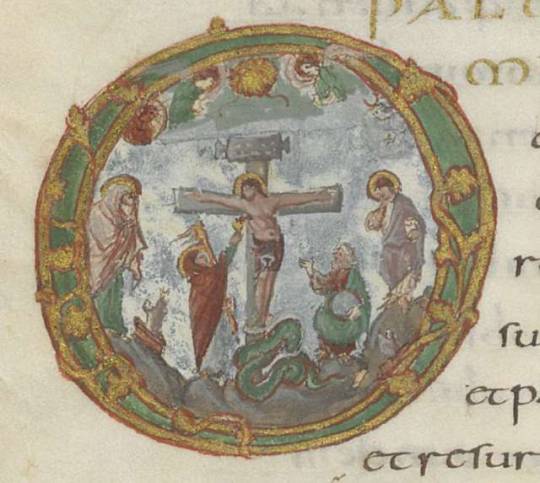
How and Why?
Ecclesia's characteristics on Christ's right hand side are already defined, the chalice collecting his blood but the Synagoga is an old gray haired man looking up. Synagoga stayed in this form, while rare, until 12th century when she became blindfolded with a broken lance. At this later time, the emphasis of Synagoga being defeated by the Church is the main objective of its symbolism and becomes a woman.
Rowe notes this timing coincides with the increasing Jewish populations in Germany and other place in Europe. There were increasing interactions between Christian and Jewish scholars and notably their different interpretations of the Hebrew Bible. The figures became a tool to reinforce the power dynamic of the Church.
Before Ecclesia met Synagoga

For centuries before her "coupling with Synagoga," Ecclesia had her own things going on. She had long been represented as the Bride of Christ taking the form of a queen. The Book of Revelation mentions "the Bride" many times and the Gospel of John talks of Christ as a "bridegroom."
Judith Glatzer Weshler expounds in A Change in the Iconography of the Song of Songs in 12th and 13th century Latin Bible, that Ecclesia imagery was sometimes conflated with the Virgin Mary, where Mary herself was depicted as the Church.
This timing is in line with the shift Nina Rowe talks about, when the portal figures appear on cathedrals. In general the 13th century was a particularly shitty time for Jews. But that's a whole other post.
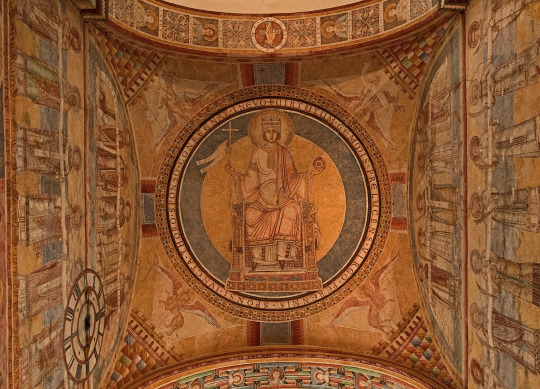
Ecclesia enthroned, Prüfening Abbey, Bavaria, 12th century
There is a precedence in the Old Testament for the symbolism between God and people, via the Song of Songs, a poem that celebrates sexual love between a man and a woman.

Jewish tradition reads it as an allegory of the relationship between God and Israel, the Jewish people.
Christianity interprets it as an allegory of Christ and his bride, the Church.
In her incredible book, "Mother of God, A History of the Virgin Mary," Miri Rubin writes about a Christian theologian, Origen (c 185- c 254) who advised early Christian followers to market and substantiate their new religion to potential Jewish converts. He thought by focusing on the Jewish Bible, the one they already knew, they could position "Christianity truth" as the revealing of new, necessary, inescapable reinterpretation of the text they thought they knew.
Origen engrossed himself particularly in the Jewish commentary of the Songs of Songs where he found messaging to fit a Christian paradigm, and replaced the Church as the bride of Christ.

Links for more:
Ecclesia and Synagoga
Wikipedia - Song of Songs
#church art#cathedrals#christianity#medieval art#christians and jews#christian symbolism#medieval cathedrals
0 notes
Text
On the Treaty of Verdun and its Consequences
Louis the Pious died in 840. Three years later his empire was divided into three independent kingdoms. The Treaty of Verdun was the first great European accord whose consequences proved durable, and its terms came as no surprise to contemporaries. The idea of partitioning the empire was not new. In accordance with Frankish custom, Charlemagne had provided for the division of his legacy in 806, and Louis the Pious had done so several times. Nevertheless, the death of Louis did not ensure the implementation of the scheme he had proposed. Only after three years of warfare and negotiation did the three brothers, Lothar, Louis, and Charles, arrive at a solution of their own formulation.
Prelude and Circumstances
The death of his father prompted Lothar to forget the arrangements he had agreed to at Worms in 839. He meant to claim it all, as Nithard reports:
“When Lothar heard that his father had died, he dispatched messengers everywhere, especially across all of Francia. They announced that he would take over the empire that had once been given to him. He promised that he would allow everyone to keep the benefices granted by his father, and that he desired to augment them. He ordered that persons whose loyalty was doubtful should promise their fealty. Moreover, he commanded that they should come before him as soon as possible, and that those who refused to do so should be executed.”
Lothar’s position appeared in fact quite strong. Louis of Bavaria had only a few troops and faced threats of Saxon revolt and Slavic incursion. Lothar, moreover, could count on the help of his nephew Pippin II, who led a part of the Aquitainian nobility in a revolt against Charles the Bald.
Lothar Versus Charles
Now seventeen, Charles had been established by his father in Aquitaine, where his mother Judith also resided. Because he needed to ensure the allegiance of followers north of the Loire and west of the Meuse, he embarked on a trip across his realm. But no sooner had Charles moved on from a locale, than Lothar's promises and threats seduced the local nobility. Thus, according to Nithard, as Lothar approached the Seine, Abbot Hrlduin of St. Denis, Count Gerard IT of Paris, and Pippin, the son of Bernard of Italy, “chose like slaves to break their word and disregard their oaths rather than give up their holdings for a little while.” Lothar sent envoys everywhere, including Provence and Brittany, to exact oaths from the nobility. Alternating flattery with threats, he promised Charles protection and a new partition, and meanwhile schemed to undermine his noble support with the help of repeated truces. Charles, however, also worked relentlessly to shore up his position by renewing ties with old supporters and gaining new ones. At Orleans, he received a pledge of fealty from Count Warin of Mâcon; at Bourges, he worked to win over Bernard of Septimania from Pippin II; and at Le Mans, he secured the support of Lambert III, count of Nantes. Nevertheless, the fruits of these efforts remained uncertain because Charles could not be everywhere at once. To obtain lasting success, he needed to defeat Lothar’s numerically superior forces. For this, Charles would have to make common cause with his brother Louis, who had withdrawn into Bavaria after suffering similar desertions among his followers.
The Alliance of Louis and Charles
In the spring of 841 fortune smiled on the two brothers. Charles managed to force a crossing of the Seine, and Louis arrived in the west to meet him after defeating Adalbert, Duke of Austrasia. The two princes combined forces near Auxerre. With the agreement of the bishops, they appealed for a “judgment of God,” that is, a trial by battle. On 25 June 841, the army of Charles and Louis squared off against that of Lothar and Pippin II at Fontenav-en-Puisave, near Auxerre. As lay-abbot of St. Riquier, die historian Nithard was also a participant, and he declared that “it was a great battle.” The engagement was, in fact, one of the greatest and most horrific of the Carolingian period. Contemporary chroniclers speak of thousands of dead: “a massacre whose equal no one could recall ever before witnessing among the Franks.” A certain Angilbert left an echo of the fratricidal slaughter in a rhythmic Latin poem:
‘May neither dew nor rain nor shower moistens that meadow where men most skilled in war did fall, who were lamented with tears by fathers, mothers, brothers, sisters, and friends.
From a hilltop, I gazed upon the valley below where brave Lothar repulsed his enemies and beat them back in flight across the brook.
Likewise on the side of Charles and Louis, the fields are white with the linen garments of the dead, as they are wont to be with birds in autumn.
The battle deserves no praise; it should be no subject of fine song. North, south, east, and west, may they all lament those who died by such a penalty.”
Whatever the assessment of Angilbert, his master Lothar was defeated and fled to Aachen. After celebrating a Mass of thanksgiving on the field of victory, Louis and Charles received a number of nobles who had waited to see the issue of the battle. Thus Bernard of Septimania arrived from his nearby camp, and committed his sixteen-year-old son William to the care of Charles the Bald. The young man became as much a hostage as a vassal, and his mother Dhuoda responded to his absence by composing for him her famous Handbook, where in she outlined a program of education for a young Christian nobleman.
The Strasbourg Oaths (842)
Despite his defeat, Lothar continued to intrigue, making new offers to Charles in an effort to break his alliance with Louis of Bavaria. The two allies, however, were firm in the belief that God was on their side, and they sealed their pact of cooperation. On 12 February 842, they exchanged oaths to this effect at Strasbourg in the presence of each other’s troops:
“For the love of God and for our Christian people’s salvation and our own, from this day on in as much as God grants me knowledge and power I shall treat my brother with regard to aid and everything else as a man should rightfully treat his brother, on condition that he do the same for me. And I shall not enter into any dealings with Lothar which might with my consent injure my brother.”
Nithard preserved the foregoing words, and he did so not once, but twice, in two similar yet decisively different forms. To make himself clear to the other’s followers, each brother pronounced his oath in their language: Louis spoke in “Romance,” while Charles spoke in lingua teudisca, or “Germanic.” Thereupon their respective vassals proceeded to swear an oath in their own vernacular—also recorded by Nithard—promising to abandon their lord should he break his pledge. Thus the Strasbourg Oaths have come to mark not only a momentous diplomatic and political event, but also an important step in the linguistic history of Europe. In order to celebrate the harmony that reigned between the allies, games were often arranged, as Nithard describes:
“They came together wherever a show could be accommodated. With a whole multitude gathered on either side, each with an equal number of Saxons, Gascons, Austrasians, and Bretons, they first rushed at full speed against one another as if they meant to attack. Then, one side would turn back, pretending to flee to their teammates under the cover of shields, but countering, they would dart back after their former pursuers. Finally, both kings and all the young men spurred forward their horses with immense clamor and lances in hand, and they gave chase by turns as the other side took flight. It was a show worth seeing thanks to the outstanding participants and good discipline. In such a vast array of different players no one dared hurt or abuse another, as often happens even when the games are small and among friends.”
Lothar Submits
Finally, the two brothers marched on Aachen. They occupied the palace, though Lothar had already carted away the treasury. With the accord of the bishops, they then proclaimed Lothar unworthy to govern, and they proposed to divide the empire between themselves. Twelve commissioners were appointed on each side to determine their respective shares. Thus, Lothar had to know that an indefeasible alliance now united Louis and Charles. After Fontenay, the Strasbourg Oaths and the capture of Aachen, the ambitious emperor had no choice but to yield. He abandoned his erstwhile ally, Pippin II. With great generosity, Charles and Louis agreed to resume negotiations on a new basis aimed at a tripartite division of the empire, excluding Aquitaine, Bavaria, and Lombardy, since these regions were considered respectively as the home domains of Charles, Louis and Lothar.
Negotiations (Spring 842-August 843)
It was high time for the brothers to come to terms. Frankish political turmoil had dramatically emboldened foreign sea-borne raiders, who now went so far as to pillage important centers like Quentovic and even Rouen. To dislodge one group of Northmen, the monks of St. Wandrille had agreed to pay an enormous tribute, and thereby introduced an inviting precedent. A group of Danes also settled themselves, with Lothar’s consent, on the Frisian island of Walcheren and some neighbouring places. In Provence, Muslim raiders attacked Marseille and Arles, while other Arab forces made inroads against Benevento in southern Italy. Finally, the usual restiveness of Aquitaine, Brittany, Saxony, and the Slavs posed a host of additional challenges.
The Difficulties
Nevertheless, the negotiations were to last for well over a year, such was the mistrust of the parties and the difficulty of the issues involved. On 15 June 842, the three brothers came together near Mâcon, and agreed to keep the peace until autumn, when a meeting of delegates was scheduled to convene on 30 September for the purpose of dividing the empire equally and fairly. This gathering was scuttled due to fears aroused by Lothar’s behaviour. Another meeting successfully convened on 19 October 842 at Koblenz, where the Rhine separated the camps of the two delegations, and the abbey of St. Castor served as a site for their deliberations. Although Charles and Louis had originally agreed that Lothar should choose first among the three parts of the kingdom, Lothar’s envoys cavilled over the terms of a “fair and equitable partition” in face of the avowed ignorance of all concerning the empire’s extent and resources. Although Charles and Louis had offered him everything between the Rhine in the east and the Meuse, Saône, and Rhone in the west, Lothar wanted, in addition, those portions of the Carolingian heartland that lay west of the Meuse in the region of the Charbonnière Forest. In the end, the protests of Lothar’s delegates over what was “fair and equitable” backfired. It was decided that no decision could be made until a survey of the empire was taken to ensure a just partition. The truce between the brothers was twice extended while commissioners worked to assess the resources of the empire. Though arduous and long, their work was furthered by inventories (descriptiones) listing bishoprics, religious foundations, counties, and royal properties.
Charles’s Marriage
Meanwhile, Charles the Bald used the truce to consolidate his position. He married Ermentrude, the daughter of Count Odo of Orléans, on 14 December 842. Odo stemmed from a family based along the Middle Rhine which was probably related to that of Gerold, Charlemagne’s brother-in-law. Odo himself had married Engeltrude, the sister of Count Gerard and the seneschal Adalhard, one of the most powerful lords in western Francia. Nithard wrote at length concerning Charles’s choice of bride:
“Louis the Pious in his time had loved this Adalhard so much that he did whatever Adalhard wanted everywhere in the empire. Adalhard cared less for the public good than for pleasing everyone. He persuaded the emperor to distribute privileges and public property for private use, and since he arranged for whatever anyone requested, he totally ruined the government. By this means it happened that he could bend the people to do whatever he wanted.”
Charles no doubt hoped to gain the favor of Adalhard through his marriage, even though his brother Gerard had joined Lothar’s cause. For Nithard added: “Charles entered into this marriage above all because he thought he could attract the largest following with Adalhard.” Charles spent the rest of the harsh winter of 843 with his new wife in Aquitaine, prosecuting the fight against Pippin II. Spring brought him a series of unpleasant reports: Empress Judith died on 13 April; Scandinavian raiders captured Nantes on 24 June; and an important victory was scored by the Bretons under the leadership of their duke, Nominoë. The young king required freedom to act, and this largely presupposed a resolution of the disputes surrounding the partition. In August 843, the three brothers agreed to meet at Dugny, near Verdun, and there they concluded their momentous transaction.
The Treaty of Verdun and Its Terms
The text of their agreement has not been preserved, but the boundaries of the three kingdoms established around the kernels of Aquitaine, Lombardy, and Bavaria can be determined from indirect evidence. To Charles went everything to the west of a line that roughly followed the Scheldt, Meuse, Saône, and Rhone rivers, while Louis acquired everything east of the Rhine and north of the Alps. Retaining his imperial title, Lothar received the central strip of territories extending from the North Sea to Italy. Still, it is not enough to trace the map of the three kingdoms of the Treaty of Verdun, we must also consider the underlying reasons for the boundaries that emerged.
The Rationale of the Partition
Since the nineteenth century, historians, especially in France and Germany, have used a variety of rationales to account for the formation of the three kingdoms. In the heyday of the principle of nationality, the French historians Jules Michelet and Augustin Thierry believed that the negotiators of 843 had sought above all to do justice to national sentiment and linguistic distinctions. Hence, “France” and “Germany” were born at Verdun, while the portion assigned to Lothar was destined to break up into pieces that later emerged as the Netherlands, Belgium, Switzerland, and Italy. This idea proved so durable that Joseph Calmette could still remark in his generally balanced synthesis “Effondrement d'un empire et la naissance d'une Europe (Paris, 1941)” that the Treaty of Verdun had ‘Violated nature” in establishing a no-man’s-land between France and Germany. The negotiators had cut into “the living flesh of France and Germany, and the wounds thus made had never healed, and had even reopened at periodic intervals.” In his “Naissance de la France (Paris, 1948)”, Ferdinand Lot was in general more circumspect. Although he noted that “no concept of race or language had ever determined the shape of Carolingian or Merovingian partitions,” he added that “having experienced the rupture of their close tics, the future France and Germany could take stock of their individuality, until then confused, and live henceforth independent existences.” Moreover, he judged that “without the amputation of her eastern flank, France could never have arisen: France could only live at the cost of losing an arm.”
At the time, however, there was no “France,” no “Germany.” Charles the Bald made a kingdom composed of diverse peoples speaking very different languages. Precious little could serve to unite the Goths of the Spanish March, the Gascons, the Aquitainians, the Bretons and the peoples of Neustria and Flanders. To the east, Louis of Bavaria could scarcely claim greater cohesion among his subjects, despite the contrary assertions of German historians of the nineteenth and early twentieth centuries. To explain the grounds for the partition enacted at Verdun, we must look beyond nationality and nationhood. Some historians have proposed that the emphasis had lain on the economic needs of each of the future kingdoms. In his “History of Europe”, written in 1917 and first published in 1936, Henri Pirenne stated that “the point of view espoused by the negotiators was dictated by the prevailing system of economy.” Each partaker in the division was to receive an area whose revenues were more or less equal. On the basis of this idea, Roger Dion noted in 1948 that each allotment divided the various economic zones of western Europe along a north-south axis: the coastal pasturelands of the north, the central cereal plains, forests, and wine regions, and finally the salt marshes and olive groves of the south. However intriguing, these hypotheses fail in their turn to account for all the facts. Moreover, the Carolingian princes had not read Aristotle and learned from him that polities should be self-sufficient.
The Belgian historian François Louis Ganshof turned to contemporary sources to penetrate the rationale of the partition of 843, and we shall follow his example. On the subject of partitions, Nithard had, of course, noted two significant facts: first, that “fertility or equal size of the lands apportioned was not considered so much as the fact that they were adjacent and fitted into the territory already held by each brother”; and second, that “Lothar complained about the fate of his followers, since in the share that had been offered to him he would not have enough to compensate them for what they had lost.” Nithard’s remarks suggest the most satisfactory explanation. The brothers were most concerned about the fate of their followers, for without their help, they could do nothing.
Therefore, they had to keep the benefices of their vassals within their respective kingdoms, since it was recognized that no vassal could pay homage to several lords. To avoid the likelihood of incompatible obligations, Charlemagne had articulated a key principle in his Divisio regnorum of 806: “The followers of each king shall each receive their benefices inside the realm of their master.” Likewise in the Ordinatio imperii of 817, Louis the Pious had instructed that “each vassal should hold his benefices only within the dominion of his lord, and not in that of any other.” This concern explains, for instance, why the border of the western kingdom of Charles the Bald crossed the Saône and took in a part of Burgundy that included the holdings of his vassal Warin, count of Mâcon, Autun, and Chalon and abbot of Flavigny. Louis of Bavaria likewise received a section of the left bank of the Rhine including the bishoprics of Mainz, Worms, and Speyer, not on account of the local vineyards, as a later chronicler would report, but to keep the lands of powerful episcopal vassals inside his kingdom.
Hence, the problems of benefices and fealty weighed heavily in the negotiations that led to the treaty ratified at Verdun. As Fustel de Coulanges pointed out in the nineteenth century, “the partition was not undertaken for the people, but rather for the vassals.” With the help of maps, we can easily see that each brother wanted to maximize the number of his abbeys, bishoprics, and fiscal domains in Francia. The heartland of the empire was home to choice benefices held by great Austrasian families, but there also lay the main state residences that each king strove to retain for his own use, enjoyment, and profit. Each of three brothers was a “king of the Franks.” They reigned jointly over their respective fractions of the “Kingdom of the Franks,” while they separately ruled Aquitaine, Bavaria, and Lombardy.
The Consequences of the Partition at Verdun
Those who divided the empire could not possibly have foreseen that the borders fixed at Verdun would determine the map of medieval Europe, and furthermore that the boundary between the kingdom of Charles the Bald and the empire of Lothar was destined to survive for centuries. Throughout the Middle Ages, the Scheldt River separated the “kingdom” from the empire; the Saône divided Burgundy into two parts: the duchy to the west, and the county—later known as Franche-Comté—to the east, while further south one passed once again from the “kingdom” to the empire by crossing the Rhone. The border of the “kingdom” as fixed at Verdun is still visible today near the Argonne plateau along the line separating the modem French départements of Meuse and Marne. To the southeast, the Pyrenees did not represent a frontier at all, since Charles possessed Spanish lands that remained part of the “kingdom” until the reign of Saint Louis (1258). The boundaries between the realms of Lothar and Louis would later prove less stable as a consequence both of further partitions made among the emperor’s heirs and of the territorial ambitions of the German kings. Yet there again we find the outline of the future Germany. To my mind, the Treaty of Verdun was the “birth certificate” of modem Europe. For contemporaries, the momentous event marked the end of the great ideal of unity. Florus of Lyon reacted with bitterness:
The mountains and hills, woods and rivers, springs,
High cliffs and deep valleys too.
All bemoan the Frankish people, which, after its rise to empire by the gift of Christ,
Now lies covered in ashes.
It has lost both the name and the glory of empire,
and the united kingdom has fallen to three lots.
For there is no longer any one recognized as emperor:
instead of a king, there is a kinglet; for a realm, but the fragments
thereof.
This Lament on the Division of the Empire voiced the concerns of the clerical party, who had hoped to maintain imperial unity and who deeply feared that division would weaken the church. The ecclesiastical provinces and individual bishoprics were also partitioned as a result of the Treaty of Verdun. Thus, the sees of the province of Cologne were variously assigned to the separate realms of Lothar and Louis; similarly, the bishop of Strasbourg lived in Lothar’s empire, while he remained a suffragan of the archbishop of Mainz, a subject of Louis. Sometimes, a single diocese was divided into areas controlled by different sovereigns, as happened with Reims, Münster, and Bremen. A host of additional problems arose from the fact that many abbeys and bishoprics owned parcels of land situated in far-off regions, and these now came under “foreign” political control. Nevertheless, circumstances militated against the unitary ideal. Political realism dictated the creation of new dominions that could be ruled effectively by separate kings and their followers.
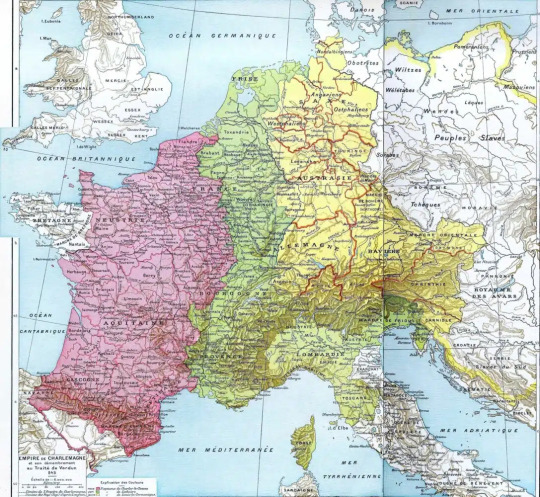
1 note
·
View note
Photo

Judith of Bavaria (797– 19 April 843) was the Carolingian empress as the second wife of Louis the Pious. Marriage to Louis marked the beginning of her rise as an influential figure in the Carolingian court. She had two children with Louis, Gisela and Charles the Bald. The birth of her son led to a major dispute over the imperial succession, and tensions between her and Charles' half-brothers from Louis' first marriage. She eventually fell from grace when Charles' wife, Ermentrude of Orléans, rose to power. She was buried in 843 in Tours.
6 notes
·
View notes
Text

Vicky Krieps (Empress Elisabeth) and director of photography Judith Kaufmann behind the scenes of Corsage (2022).
#Corsage#Corsage (2022)#costume drama#historical drama#period drama#Vicky Krieps#Judith Kaufmann#elisabeth in bavaria#elisabeth of austria hungary#elisabeth of austria#behind the scenes
7 notes
·
View notes
Text
Hey guys!
How are you doing?
My semester ended last month and now I'm on summer break! Still have one assignment to do, tho T_T
Anyways! I was at Chiemsee with my sister about a week ago!
Here are some pretty pics uwu💕


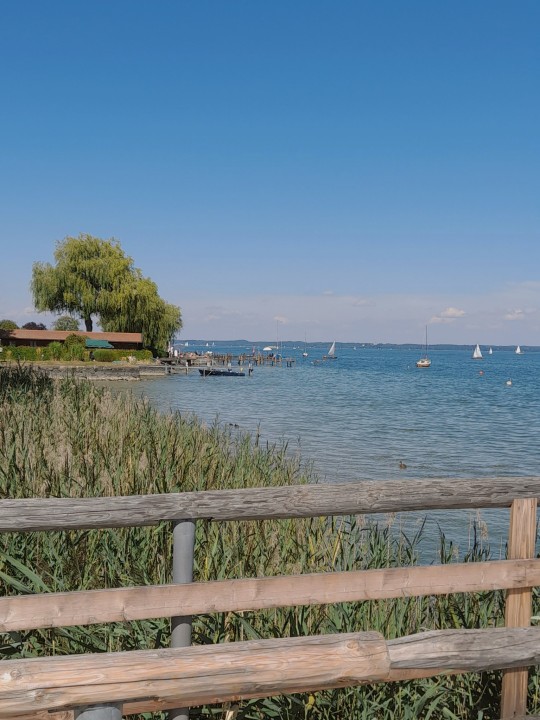

We visitied the castle Herrenchiemsee which was quite beautiful❤ But after such a hot and eventful day I was really exhausted when we arrived back at home.
Two days later my boyfriend and I traveled to Vienna for a few days. It was such a lovely time and we saw a lot of culture and beauty there. Also, our hotel was hella cool and modern!
We went to castle Belvedere to visit the art exhibition which had famous paintings of one of my favorite artists: Gustav Klimt!

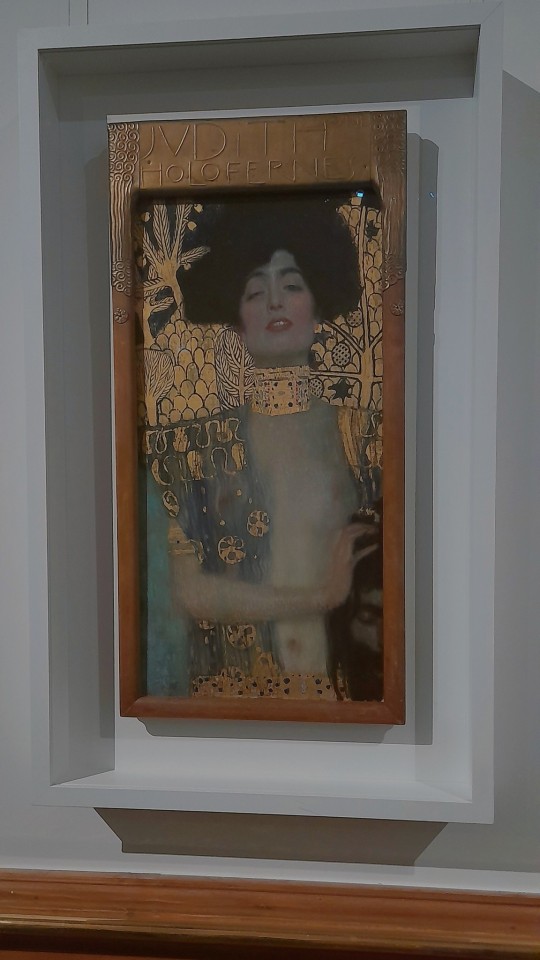

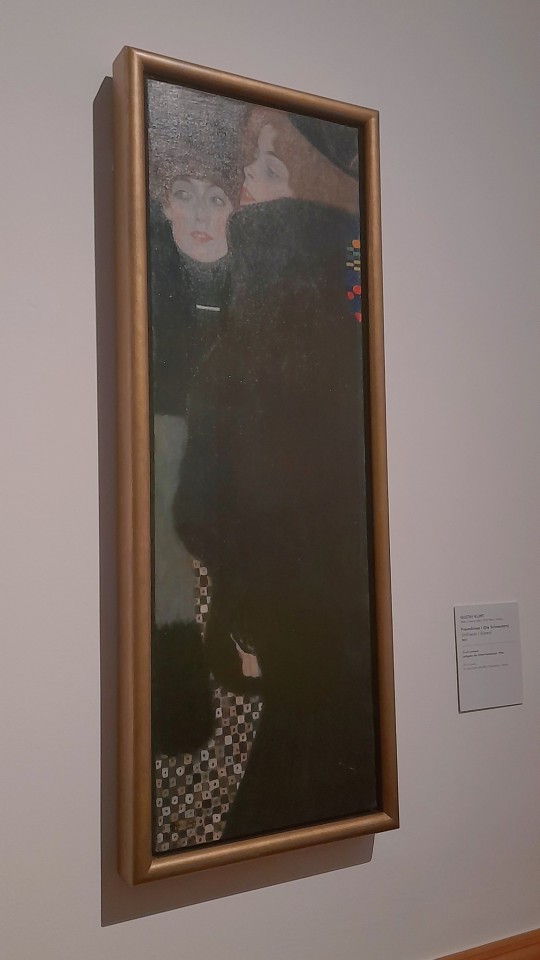
I love his art so much. You all know "The Kiss". You can see so much beauty, warmth, intimacy and love there. The second one is called "Judith" and I think she's from a story of the bible? I love the confidence she radiates.
There were of course a lot of other breathtaking artworks!
I'm gonna post these in separate posts, tho.
We also were at a butterfly house at the Hofburg. Look at those beauties!🦋💕


On the last day we visited the KLIMT immersive experience. I was in awe!
Pics will also follow in separate posts.
Today I signed up for a few classes for the next semester. I really hope I get a place in the class about Virginia Woolf's look on London.
How are you doing?
See ya🌺💕
#aesthetic#studyblr#study inspo#travel#chiemsee#herrenchiemsee#bavaria#vienna#austria#gustav klimt#the kiss#judith#art#belvedere#butterfly#butterfly house#hofburg#art museum#art academia#romantic academia#academia aesthetic
2 notes
·
View notes
Photo






Favorite History Books || Sex With the Queen: 900 Years of Vile Kings, Virile Lovers, and Passionate Politics by Eleanor Herman ★★★☆☆
It was never adultery alone that did in a queen, or the fact that she did not resemble the Virgin Mary, or that she had polluted the royal bloodline. It was politics. If the queen followed the traditional pattern of bearing children, embroidering altar cloths, and interceding for the poor— pious duties that the Virgin Mary would likely have approved of—even if she took a lover she was usually left in peace. There was rarely reason to shoot down a political nonentity at court. But an intelligent ambitious woman who spoke her mind and built up a faction was always open to the accusation of adultery by her political rivals, whether the accusation was true or fabricated. Adultery charges offered the accuser many benefits. The very mention of adultery suddenly cast doubt upon the legitimacy of the offspring of a suspected queen, possibly rendering them unfit for the throne and opening the door to other ambitious candidates— usually the accusers themselves.
In 830, Judith of Bavaria, the second wife of Louis the Pious, found herself accused of adultery with a handsome court chamberlain. The accusers were her husband’s three sons by his first marriage who feared that Judith would influence their aging father to name her son, Charles, as his heir. Bristling with weapons, the three brothers forced their father to abdicate and imprisoned Judith in a convent. We don’t know if the queen committed adultery or not; we do know that the missiles of her enemies hit their mark and she was removed.
... Character assassination which had proved so effective in the ninth century was alive and well a thousand years later. Napoleon, who hated the virtuous and beautiful Queen Luise of Prussia for egging her apathetic husband on to defend his country against the French, twisted her admiration for Czar Aleksandr of Russia into a slanderous story. The handsome blond czar had visited Prussia in 1805 and an instant bond sprang up between the czar and the queen. When French troops marched into the vacated royal palace in Potsdam, Napoleon was delighted to find Aleksandr’s portrait hanging in the queen’s bedroom. He did all he could to tarnish the lady’s unblemished reputation and make her bumbling husband, King Friedrich Wilhelm III, look like a cuckold. Stories of the pious queen’s sordid affair with the czar haunt her memory to this day.
It was harder for Napoleon to blacken the reputation of Louise’s aunt, Queen Maria Karolina of Naples, who had had numerous affairs with courtiers and a decades-long affair with her top minister. What outraged the prudish French emperor received only a shrug and a wink from the rowdy Neapolitans. Stymied in his efforts to ruin the queen’s reputation, Napoleon invented the story of a lesbian affair between Maria Karolina and her friend Emma, Lady Hamilton, the wife of the British ambassador and later the mistress of Admiral Horatio Nelson. Emma, the conqueror learned, would tiptoe up a secret stairway to the queen’s apartments, probably to deliver dispatches from British allies or perhaps just to avoid palace protocol and enjoy a cup of coffee. But Napoleon saw the secret staircase as proof of unnatural vice. Unfortunately for the French emperor, his dart did not hit home; the raucous Neapolitans were equally undisturbed by rumors of the queen’s lesbianism.
Some Italians gladly strangled erring wives with silken ribbons, but many more were cavalier about sexual escapades. When the theocrat Savonarola, who had held a moral stranglehold over the sex lives of Florentines, was burned at the stake in 1498, one high-level magistrate, eyeing the rising flames of the pyre, heaved a heavy sigh of relief. “Thank God,” he grunted. “Now we can return to our sodomy.”
Indeed, of all European nations, the king, court, and country of Naples was the least disturbed by stories of queenly adultery. When a stroke felled the sixty-one-year-old queen Maria Karolina in her sleep in 1814, her husband, King Ferdinando, loudly proclaimed that his forty-four years of marriage had been nothing short of martyrdom, and within two months he married his young mistress, Lucia Migliaccio. Ferdinando’s son, Francesco, sharply rebuked him for marrying a woman known to have enjoyed so many lovers. But the king, laughing, replied, “Think of your mamma, my boy!”
114 notes
·
View notes
Photo

Wenceslas III (1289-1306), King of Bohemia, Hungary etc.; lithograph by Josef Kriehuber.
Wenceslaus III was King of Hungary and Croatia between 1301 and 1305, and King of Bohemia and Poland from 1305. He was the son of Wenceslaus II, King of Bohemia, who was later also crowned king of Poland, and Judith of Habsburg. Still a child, Wenceslaus was betrothed to Elizabeth, the sole daughter of Andrew III of Hungary. After Andrew III's death in early 1301, the majority of the Hungarian lords and prelates elected Wenceslaus king, although Pope Boniface VIII supported another claimant, Charles Robert, a member of the royal house of the Kingdom of Naples.
Wenceslaus was crowned king of Hungary on 27 August 1301. He signed his charters under the name Ladislaus in Hungary. His rule was only nominal, because a dozen powerful lords held sway over large territories in the kingdom. His father realized that Wenceslaus's position could not be strengthened and took him back from Hungary to Bohemia in August 1304. Wenceslaus succeeded his father in Bohemia and Poland on 21 June 1305. He abandoned his claim to Hungary in favor of Otto III of Bavaria on 9 October.
#vencel iii#magyar királyság#magyar király#kingdom of hungary#königreich ungarn#königreich böhmen#full length portrait#josef kriehuber#House of Přemyslid#Přemyslid dynasty#full-length portrait
3 notes
·
View notes